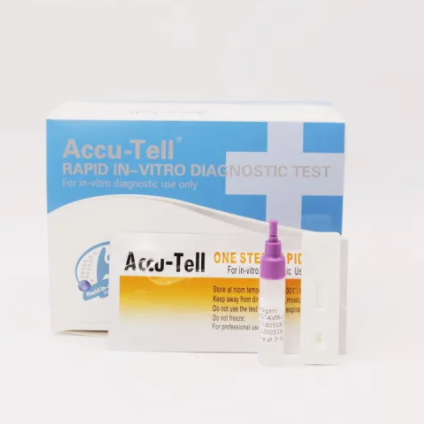Rotavirus Test: A Comprehensive Guide to Diagnosis and Prevention
Introduction
In this comprehensive guide, we will explore the topic of rotavirus testing. Rotavirus is a highly contagious virus that primarily affects infants and young children, causing severe gastrointestinal symptoms such as diarrhea and vomiting. Timely and accurate diagnosis of rotavirus infections is crucial for effective management and prevention of the spread of the virus. This article will provide detailed information about rotavirus testing, its significance, procedure, and prevention measures.
1. What is Rotavirus?
Rotavirus is a common viral infection that targets the gastrointestinal system. It is a leading cause of severe gastroenteritis, particularly in children under the age of five. Rotavirus spreads through the fecal-oral route, primarily via contaminated hands, objects, or surfaces. The virus can survive on surfaces for a long time, making it highly contagious.
2. Symptoms of Rotavirus Infection
The symptoms of rotavirus infection typically appear within two to three days after exposure. Common symptoms include:
Severe diarrhea
Vomiting
Abdominal pain
Fever
Dehydration
3. Importance of Rotavirus Testing
Rotavirus testing plays a crucial role in managing and preventing the spread of the virus. Here are the key reasons why rotavirus testing is important:
Accurate Diagnosis
Rotavirus testing provides a definitive diagnosis, distinguishing rotavirus infection from other causes of gastroenteritis. Accurate diagnosis helps healthcare providers determine the appropriate treatment and management strategies.
Infection Control
Identifying rotavirus cases allows for the implementation of necessary infection control measures. This includes proper hand hygiene, isolation precautions, and disinfection of contaminated surfaces, helping to prevent the spread of the virus in healthcare settings and communities.
Public Health Surveillance
Rotavirus testing contributes to public health surveillance by monitoring the prevalence and trends of rotavirus infections. This information helps public health authorities develop targeted prevention strategies and allocate resources efficiently.
4. Types of Rotavirus Tests
There are two main types of rotavirus tests:
Rapid Antigen Detection Tests
Rapid antigen detection tests, also known as enzyme immunoassays (EIA), are commonly used for quick diagnosis of rotavirus infections. These tests detect the presence of rotavirus antigens in a stool sample. EIA tests provide results within a few hours, enabling healthcare providers to promptly initiate appropriate treatment.
Nucleic Acid Tests
Nucleic acid tests, such as polymerase chain reaction (PCR) tests, detect the genetic material (RNA) of the rotavirus in a stool sample. PCR tests offer high sensitivity and specificity, allowing for the detection of even low levels of the virus. These tests are usually performed in specialized laboratories.
5. Rotavirus Test Procedure
The rotavirus test procedure typically involves collecting a stool sample from the patient. Healthcare providers will provide instructions on how to collect and handle the sample correctly. It is important to follow these instructions carefully to ensure accurate test results.
6. Interpreting Rotavirus Test Results
Rotavirus test results are usually reported as positive or negative:
A positive result indicates the presence of rotavirus antigens or genetic material in the stool sample, confirming a rotavirus infection. Further medical evaluation and treatment will be initiated based on the positive result.
A negative result means that no rotavirus antigens or genetic material was detected in the stool sample. However, a negative result does not completely rule out a rotavirus infection, as the virus may not always be present in the sample or the levels may be below the detection limit of the test.
7. Prevention of Rotavirus Infections
Preventing rotavirus infections is crucial, especially in young children. Here are some preventive measures:
Vaccination: Vaccines are available to prevent rotavirus infections and are typically administered to infants in a series of doses. Consult with a healthcare provider to ensure your child is up-to-date on their vaccinations.
Hand Hygiene: Proper hand hygiene, including regular handwashing with soap and water for at least 20 seconds, is essential in preventing the spread of rotavirus.
Surface Cleaning: Disinfecting frequently touched surfaces and objects can help eliminate rotavirus particles and reduce the risk of transmission.
Personal Hygiene: Teaching good personal hygiene practices, such as avoiding close contact with infected individuals and refraining from sharing personal items, can help prevent the spread of the virus.
Conclusion
Rotavirus testing is an important tool in diagnosing and managing rotavirus infections. By accurately identifying cases of rotavirus, healthcare providers can provide appropriate treatment and implement infection control measures to prevent further spread. Public health surveillance through rotavirus testing helps monitor the prevalence of the virus and supports the development of targeted prevention strategies. It is crucial to follow preventive measures, such as vaccination and good hygiene practices, to reduce the incidence of rotavirus infections and protect vulnerable populations, especially young children.


Comments
0